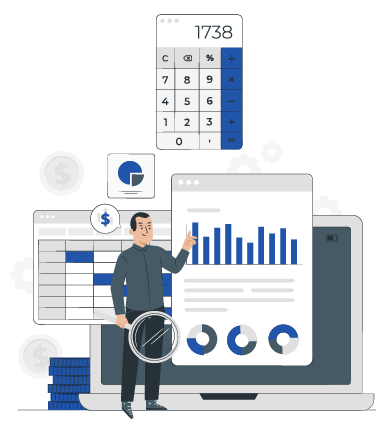How data and analytics can optimize incentive rewards programs
Maximizing results: Learn how to improve your incentive rewards programs with the power of data and analytics to optimize your strategy and drive growth for your business.

In today's competitive business landscape, incentive rewards programs have become an essential component of many businesses strategies to boost sales, retain customers, and improve overall performance. You can read The Future of Interactive Rewards and How Technology Is Changing the Game, for a better understanding of these aspects.
However, to ensure the effectiveness of these programs, decision-makers need to understand the role of data and analytics in optimizing them.
Using data and analytics for rewards programs
Data and analytics can typically be used in two different ways within an incentive rewards' strategy:
- Before running the rewards program: To get valuable insights into customers behavior, preferences, and tendencies, which can help businesses tailor their incentive rewards programs to meet specific needs and expectations.
- After running the rewards program: To consolidate and measure the results obtained with the previous campaign, in order to readjust the strategy and seek even greater efficiency in the continuity of the programs.
Data analysis, both before and after, are very important phases that must be present in any planning. And they create a continuous cycle of improvement and optimization that leverages the use of incentives to conquer new customers, retain those customers and earn their loyalty.
That's why, when choosing a platform to manage the payment of incentives, you need to check if the platform also offers data and analytics tools. And, of course, which are the quality or limits of these analysis reports.
At FynCom, we offer a dashboard that allows you to track the results of your reward programs and understand the impact that these incentives are generating for your business.
Types of data and analytics tools to consider
A study by McKinsey shows that 53% of "high performing" global sales organizations use analytics tools efficiently. But what types of data and analytics tools are they using?
The 'Before' – Analyze customer data
This is the moment where you got to know your consumer and can define well-targeted incentive strategies for the appropriate target audience.
To create a successful incentive rewards program, it's essential to analyze customer data to understand their purchasing behavior, preferences, and interests. This data can be collected through customer surveys, online interactions, and sales data. Once analyzed, businesses can tailor their rewards programs to specific customer segments and personalize their rewards offerings based on customer preferences.
This information can be very useful, for example, when rewarding actions with specific e-gifts or gift cards. The more you know your audience and the better you can deliver incentives that this audience would like to acquire, the better your return on investment will be.
The 'After' – Customer retention and loyalty
Since we have talked about return on investment, ROI is a very useful way for evaluating the success of an incentive rewards program. And for that, it's essential to define Key Performance Indicators (KPIs), such as:
- Customer acquisition;
- Customer retention rates;
- Sales growth;
- Repeat purchases;
- Average purchase value;
- Cost of customer acquisition;
- Customer satisfaction;
- Revenue generated.
By tracking these KPIs over time, businesses can determine the effectiveness of their incentive rewards programs and make necessary adjustments to optimize their results.
But not all businesses are doing it. According to the same study from McKinsey, 57% of businesses don't keep a track of data and analytics for their strategies. Which creates a great opportunity for you to get an edge over your competitors, and efficiently improve your performance with your sales and customers.
